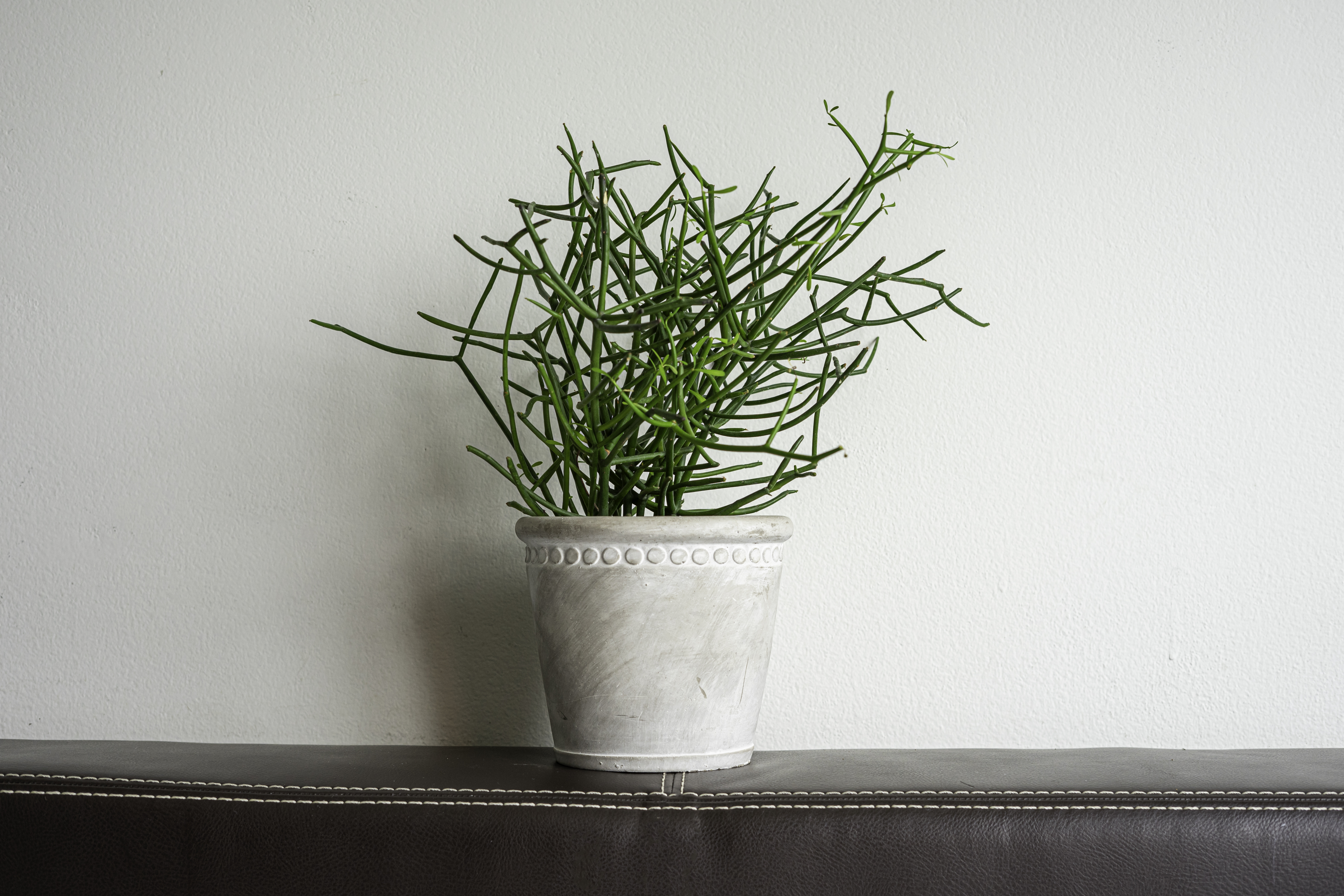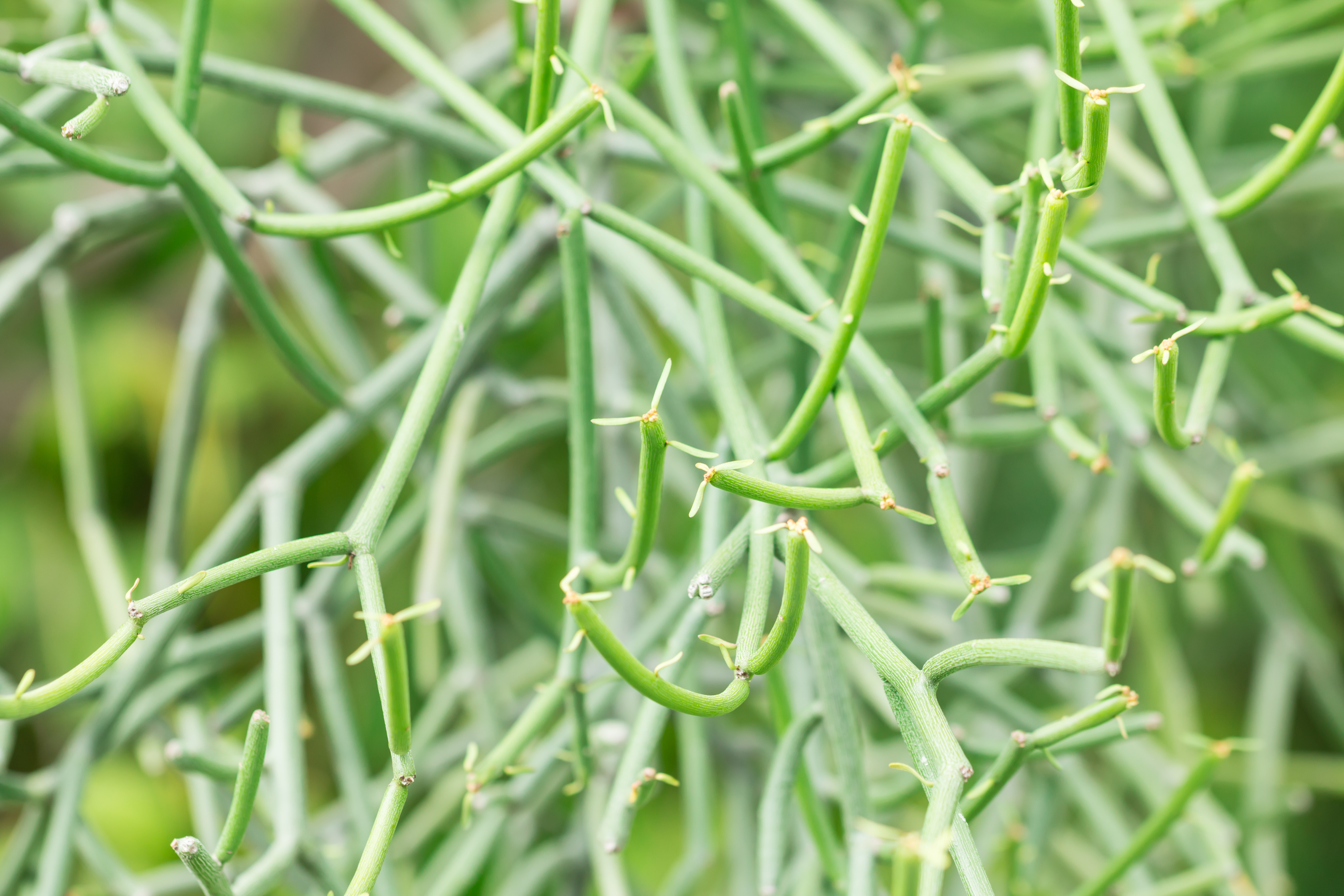Origin
Euphorbia tirucalli , commonly known as the Pencil Cactus (sometimes also called 'Fire Sticks' or 'Indian Tree Spurge') is a type of succulent named for its pencil-like branches that arrange themselves upright into a pattern somewhat resembling a candelabra.
This plant is native to semi-arid tropical climates, namely South and East Africa.
They can grow up to 8 feet tall (244 cm) and equally as wide when grown in-ground in their natural habitat. As a houseplant, though, the Pencil Cactus will stay much smaller, so you don't need to worry about it taking over your home!

Care
In order to stay happy, this plant needs plenty of sunlight. They can tolerate full sun but should also do well in lots of bright, indirect light. They also appreciate warmth and will thrive in dry conditions, so you don't need to worry about humidity - normal indoor conditions will do just fine!
Allow the soil to dry out in between waterings, and ensure your Pencil Cactus is planted in a well-draining soil in a pot that has drainage holes. They won't appreciate sitting in water, so it's important not to water yours too much.
The sap can irritate the skin, so use gloves when handling it, for example, if you're about to take some cuttings.

Other
If this plant's leaves / branches are broken or torn, they will release a milky sap that is highly toxic to both humans and animals. Therefore, it's important to keep it out of reach of kids and pets, and always wear gloves when handling this plant.
The Pencil Cactus contains hydrocarbon polymers that can be used to produce rubber substitutes. Additionally, it can be used as an energy source as it's a potential source of biodiesel.
This plant has traditionally been used medicinally to treat ailments such as cough, stomach ache and swelling (as part of a poultice). However, we definitely don't recommend trying this! Much care is needed in preparing this plant for medicinal use, so it's important that you know what you're doing, especially when given this plant's toxicity and the potential for overdose.